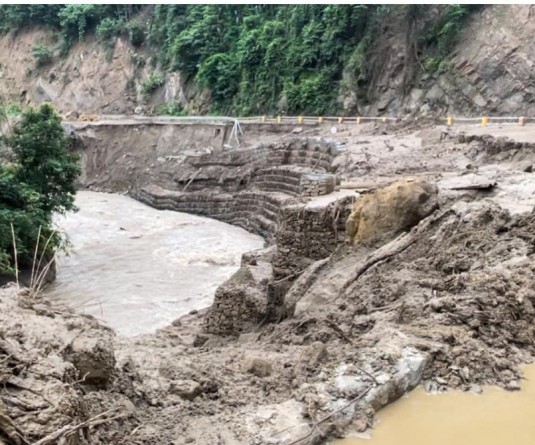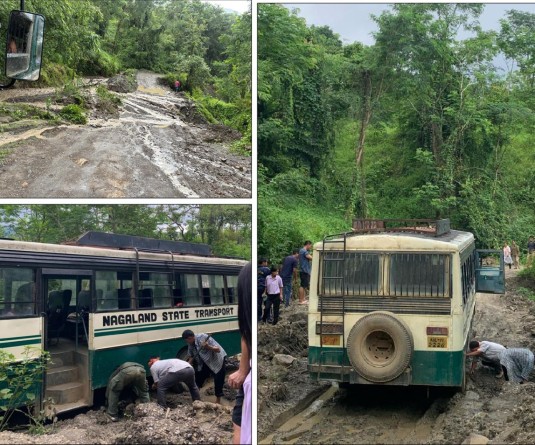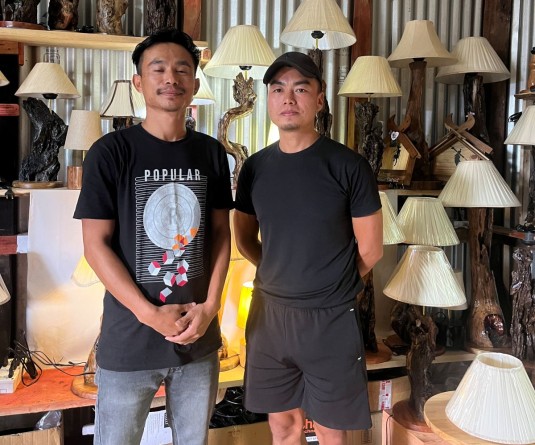A view of the Government Higher Secondary School, Zunheboto, taken on June 12. (Morung Photo)
Tokavi K Zhimo
Zunheboto | June 13
Government Higher Secondary School (GHSS), Zunheboto, established in 1957, is witnessing notable infrastructural progress with the construction of new buildings aimed at improving academic facilities. The two-storey structure, including the ground floor has more than 30 rooms to house a school canteen, library, science laboratory, multiple classrooms and an administrative block.
The foundation stone for the new infrastructure was laid by K Tokugha Sukhalu, Advisor for School Education and SCERT, Government of Nagaland, on October 6, 2020. Though construction officially began in 2018, progress was reportedly delayed due to the COVID-19 imposed lockdowns and logistical hurdles. The project is now nearing completion, with only tiling and bathroom fittings remaining.
Speaking to The Morung Express, Senior Principal Kughazhe Swu, GHSS Zunheboto acknowledged that development was prolonged due to a combination of pandemic-related disruptions and the practical difficulties of accommodating students in a partially functioning campus.
“We had to constantly shift students from one room to another to allow phased demolition and reconstruction since we do not have other classrooms to occupy, which made it difficult to speed up the work,” he explained.
The new facilities are intended to serve multiple purposes, ultimately enhancing the overall educational environment. “It will help us impart quality education to our students without the challenges of overcrowded or insufficient classrooms,” said Swu. He shared that the school has introduced dedicated reading classes to help students improve their reading skills and confidence.
GHSS Zunheboto introduced Arts stream in 2002 and Science stream in 2005. It originally offered classes from 5 to 12 and celebrated its Golden Jubilee in 2007.
As of now, GHSS Zunheboto has an enrollment of 454 students, including 17 in Class 11 and 7 in Class 12 under the science stream. The school has been making efforts to increase student intake, particularly encouraging local students to pursue higher studies within the district, thereby reducing the financial and logistical burden of studying elsewhere.
Swu noted that one of the key challenges in increasing science stream enrollment is the mindset of parents, particularly those from well-off families who are hesitant to send their children to government schools.
“Most of our science stream students come from middle-class or economically weaker backgrounds,” he said. Despite over 700 students passing out of HSLC annually in the district, many choose to study outside Zunheboto, contributing to low enrollment.
The school administration is also battling social perceptions and real concerns such as drug and marijuana abuse, which further deter parents. Additionally, the lack of a competitive academic environment and limited peer competition has negatively impacted board exam results.
Among the pressing concerns, the Senior Principal highlighted two critical issues: lack of adequate teaching staff in the science stream and the absence of bus transportation for students from remote areas. “While we have subject teachers for science stream, we only have one teacher each for Physics and Chemistry. Some face with disabilities, which makes consistent instruction challenging,” he added. The school has already submitted a request to the department for additional faculty appointments.
The transportation issue is equally significant. Unlike private schools in the district, GHSS Zunheboto does not have any school buses, which affects attendance, especially for students commuting from remote areas. The matter is been brought to the attention of district authorities and elected representatives, Swu concludes.





